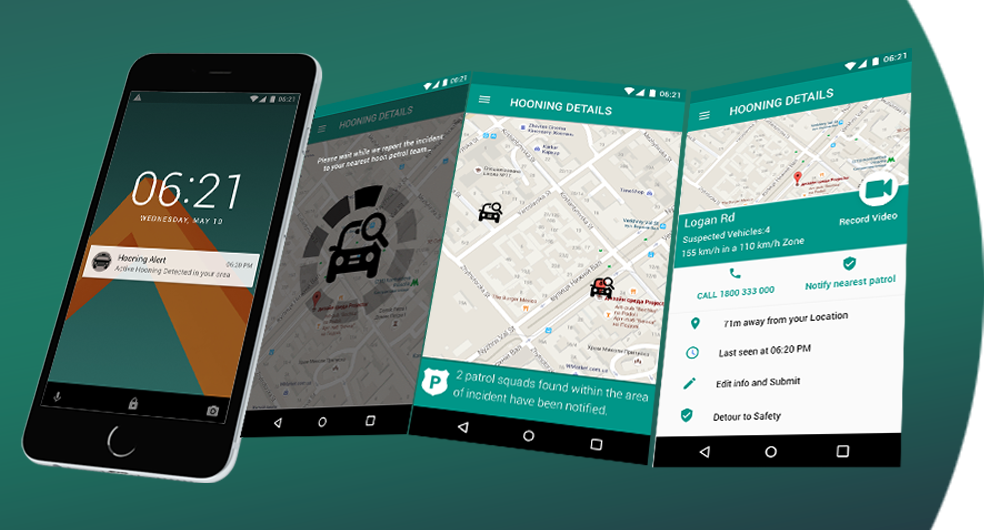

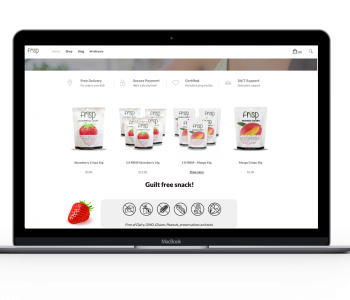
Dec 2019
3 Months
1
Product Designer
frisp.com.au, an Australian food brand that focuses on building a healthy snacking habit on children,
was going through a major rebranding. This project is a part of a big rebranding project including logo design, packaging design, and strategy design.
Initial phases of rebranding i.e. Logo and Packaging design were already rolled out and it was already showing positive results with increased sales (Since this was a big project we won't be talking about the first two phases in this project).
Our key goal was to design the website consistent to physical rebranding, by finding out why users were not purchasing from the online website.
I worked as a Product Designer throughout the design challenge. I was accompanied by a graphic designer and a marketing team. I produced all the deliverables included in this case-study and presented it to the clients (for every iteration).
Our user research team agreed to aid us on finding user group for our design excercise, based on the data provided by our research team at the end of the research we found that the users for our Frisp website were aged between 25-44. Potentially parents of children and fitness enthusiasts.

Persona Representing the user groups
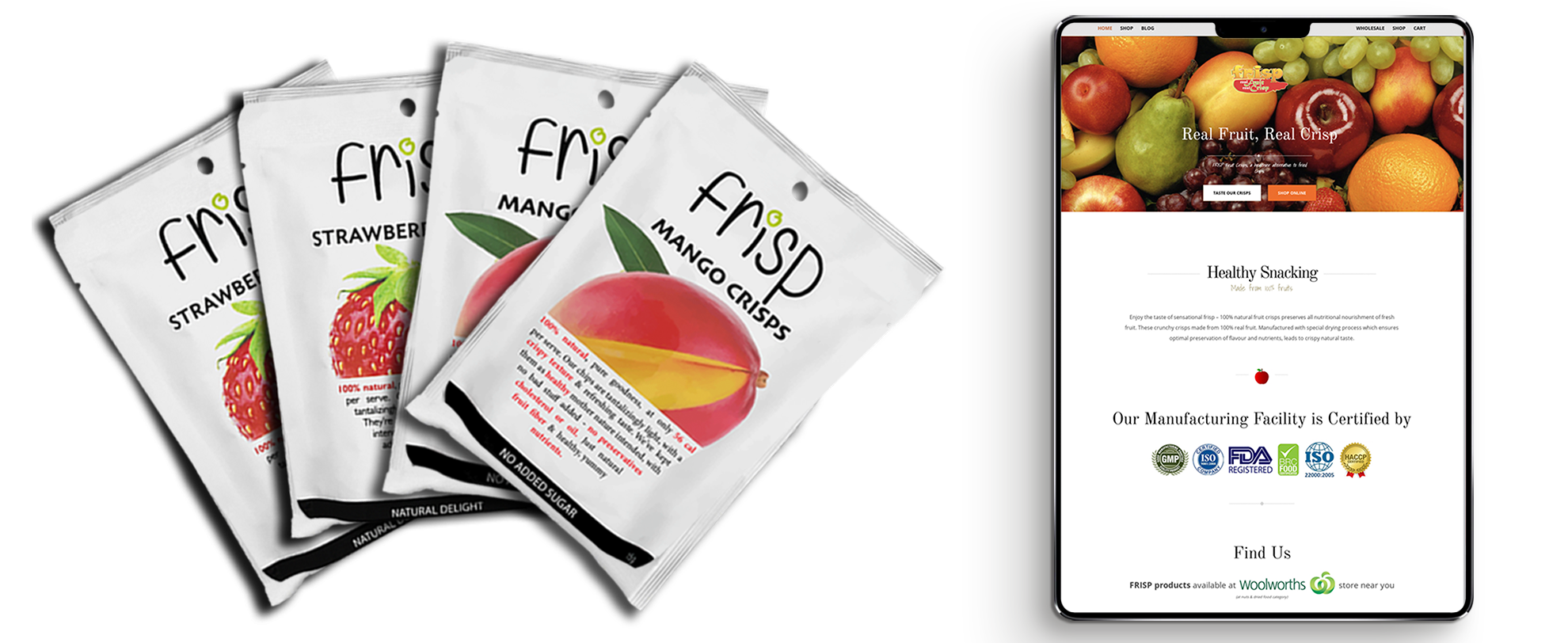
The design of an existing Frisp website (Right) didn’t comprehend the packaging (Left)
In this phase of our design process, we will be looking into common design/usability flaws in the existing frisp website. The whole purpose of this design exercise was to aid user-researchers on their research process and help us find out common flaws to help us prevent these issues on the redesign of the website.
We will be dividing the initial page of frisp into 4-sections: Navbar, Hero section, Content and Footer and look at them individually to look at the usability flaws.
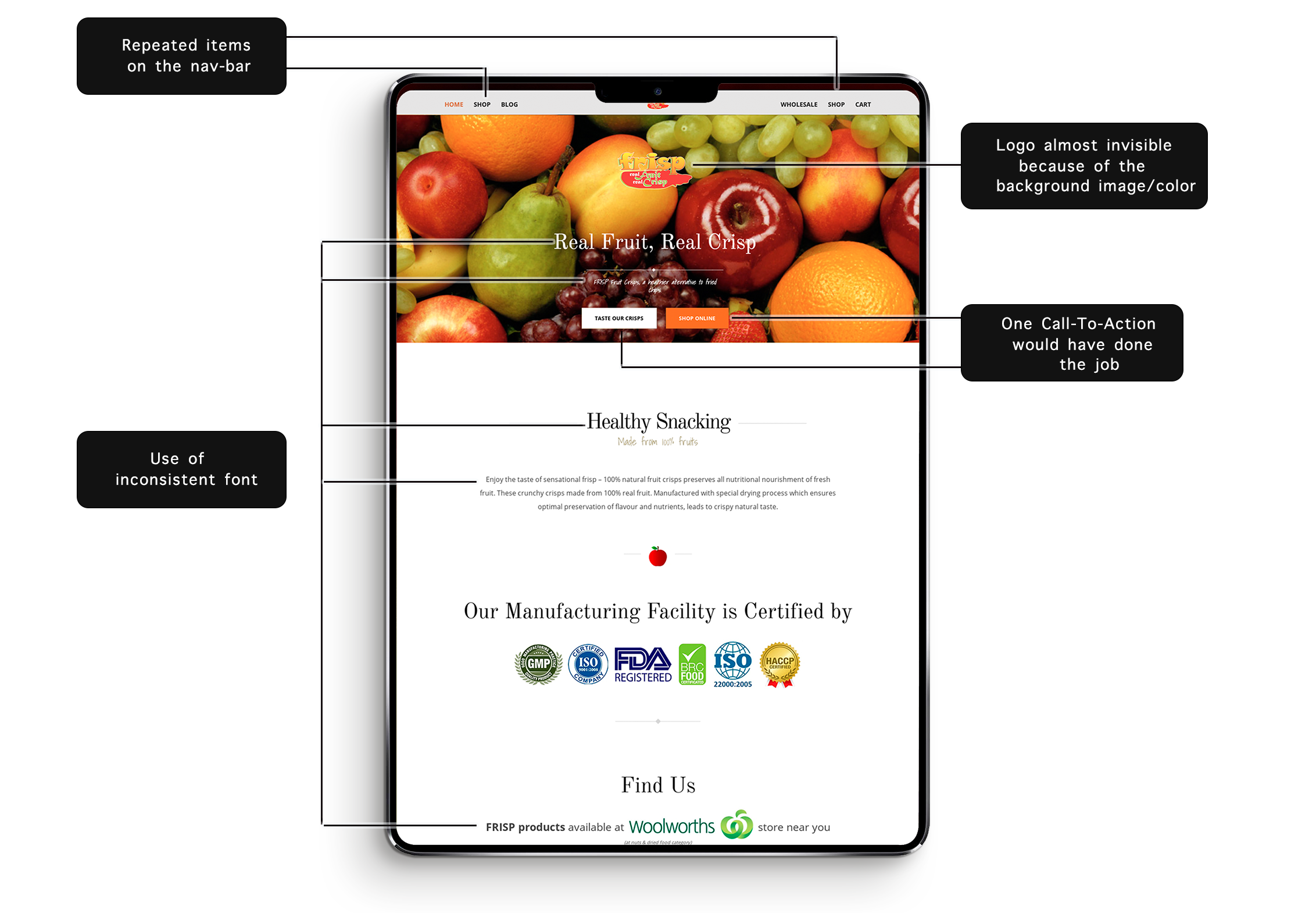
Design flaws/recommendation in existing frisp website [ navbar, hero, and content section ]

Design flaws/recommendation in existing frisp website [ content section and Footer ]
We conducted heuristic evaluation as a part of usability test on our old frisp website. We used Nelson's Heuristic evaluation framework as a guiding principle for this evaluation.
We hired 3 evaluators based on our persona sheet, and each of the evaluators were called-in at a different time of the day. The reason behind calling evaluators separately was to avoid them talking with each-other to avoid influence on their test result and also to make sure that an observer could watch whats going on with one participant at a time. During the evaluation, the evaluators would share their finding/comments to the observer and the observer would record/note the findings down. Other than that there were no communications between observer and evaluators.
Note: The name of evaluators have been changed in order to protect the confidentiality.
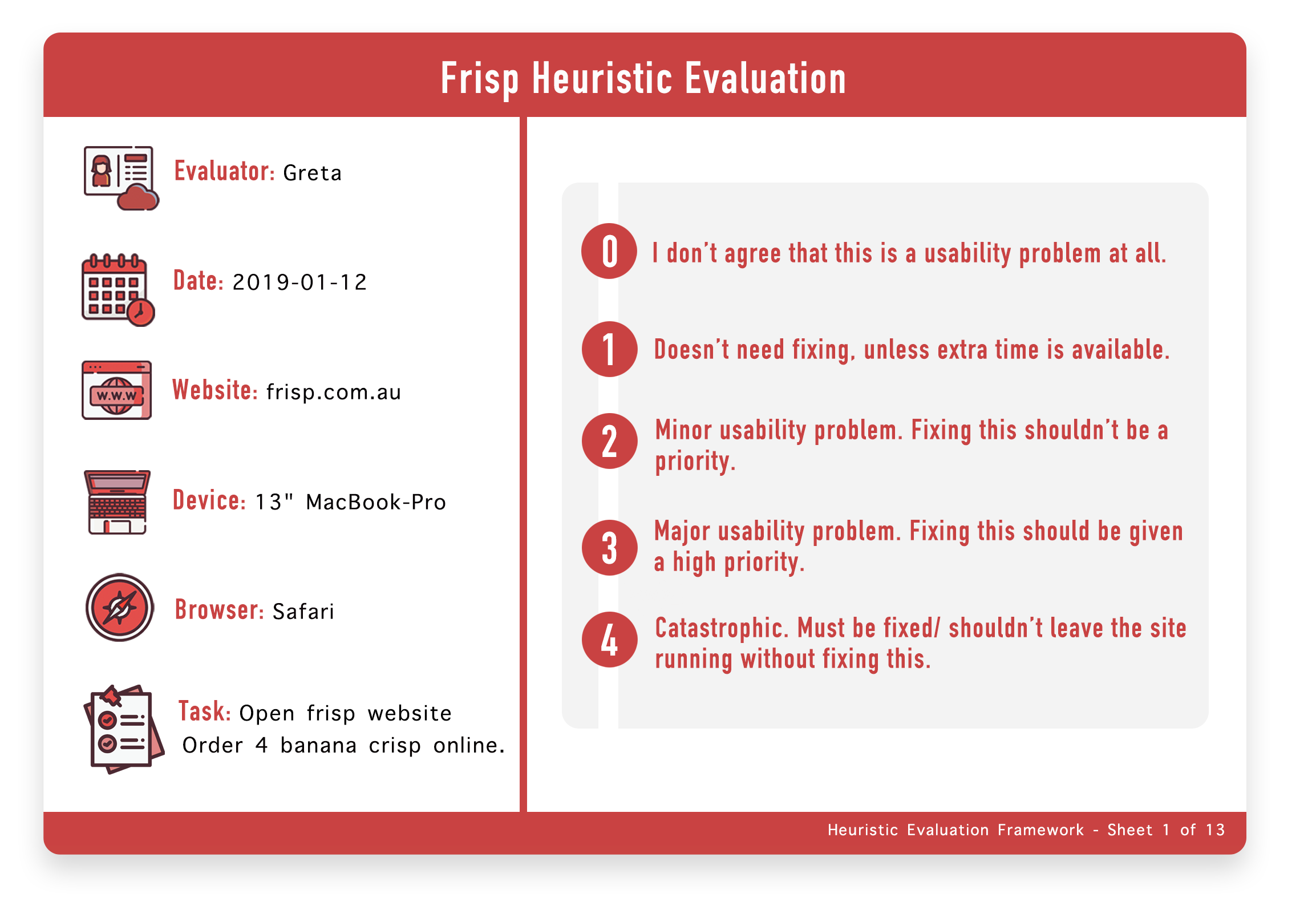 Heuristic Evaluation sheet 1 with grading criteria and basic details
Heuristic Evaluation sheet 1 with grading criteria and basic details
The picture above is the first sheet of heuristic evaluation out of 13 sheets which displays the details of user testing that was conducted with the evaluator. We wont be including every single sheet in this project since the whole portfolio project will have insane amount of images. We will instead include relevant pages out of the evaluation.
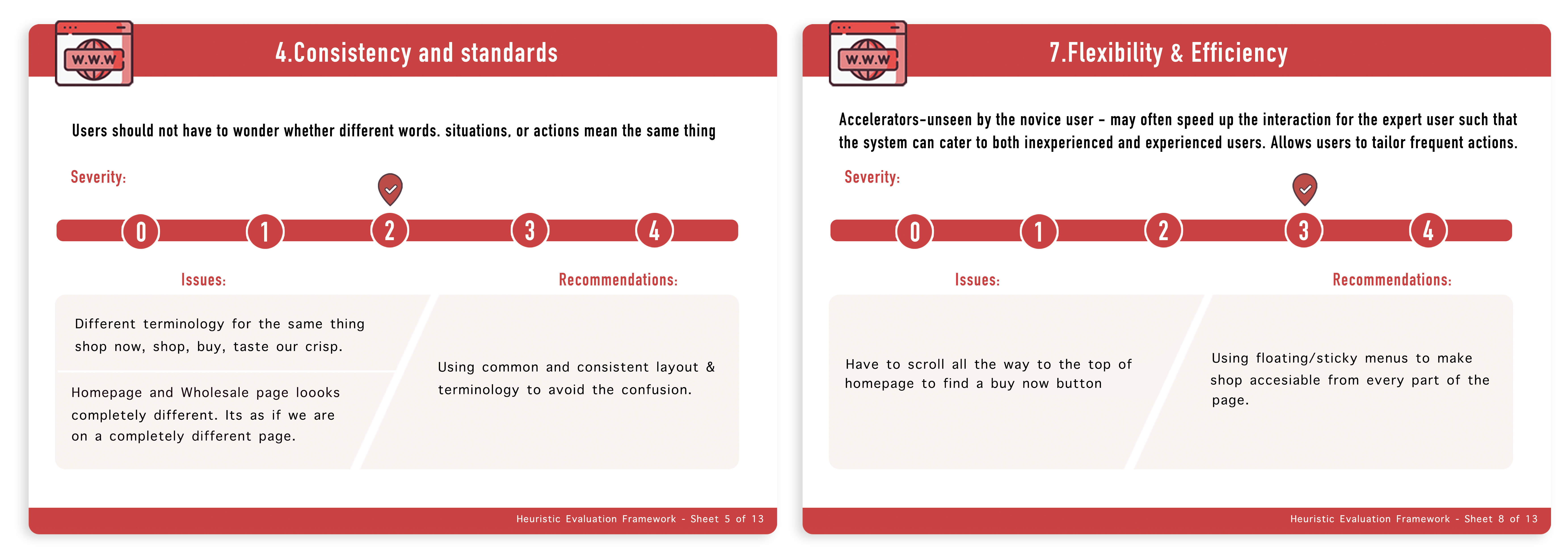
Heuristic Evaluation sheet 5 and 13 with issues criteria and basic details
Main Takeaway from this observation:
Based on heuristic evaluation and our observation on the design of the frisp website here are some takeaways we collected in frisp’s existing website:
We will be taking all of these problems/issues into consideration for the redesign of Frisp.
Based on all the data we collected we tried reframing the problem, so that every time we are about to make any decision, we would think of this question in our head and see is it contributing to what we are trying to achieve.
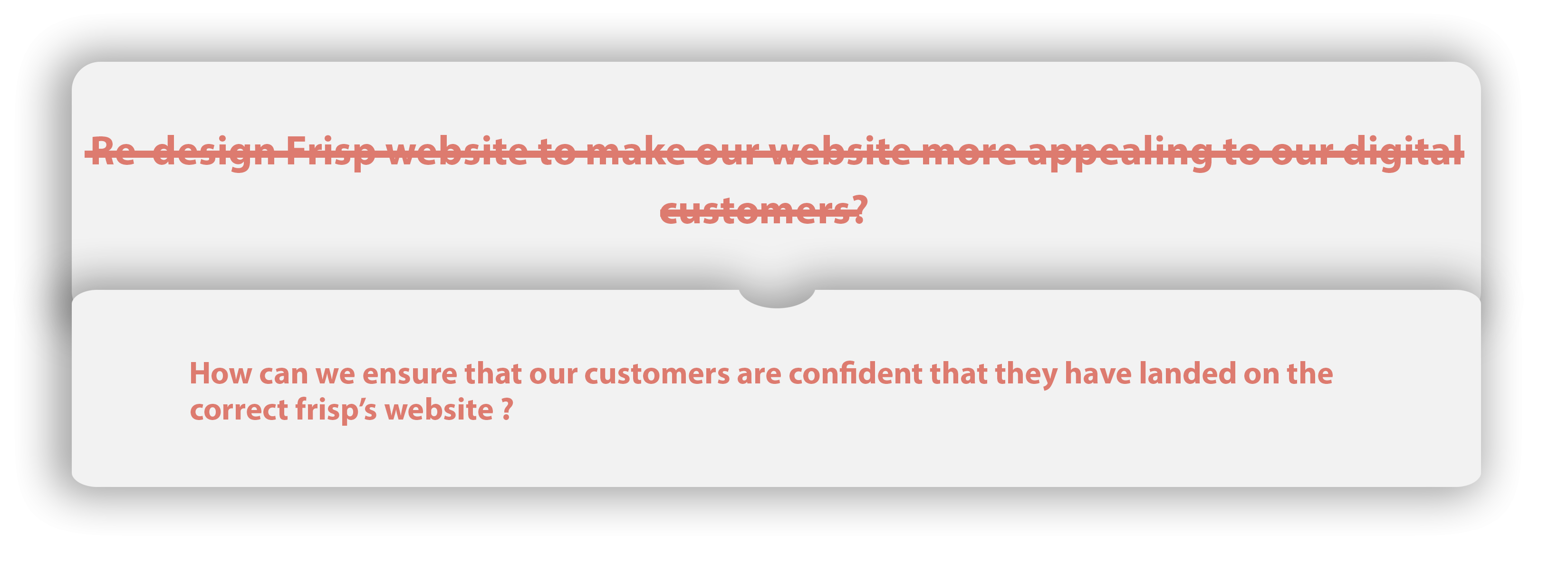
Reframed Problem Statements
We started with some Lo-Fi prototyping simply by using a texter and our drawing board. We came up with at least 6-sets of wireframes and decided to proceed with the ones below. The whole concept of these prototypes were to make sure, that we get the initial ideas or basic picture of what the site is going to look like. we haven't used any colours and have left the components and other detailed ideas of website so that we don't get attached to any designs that has been done. We were sure that these wireframes from the initial prototyping phases were going to be changed in an immense amount once we start building the visual design.
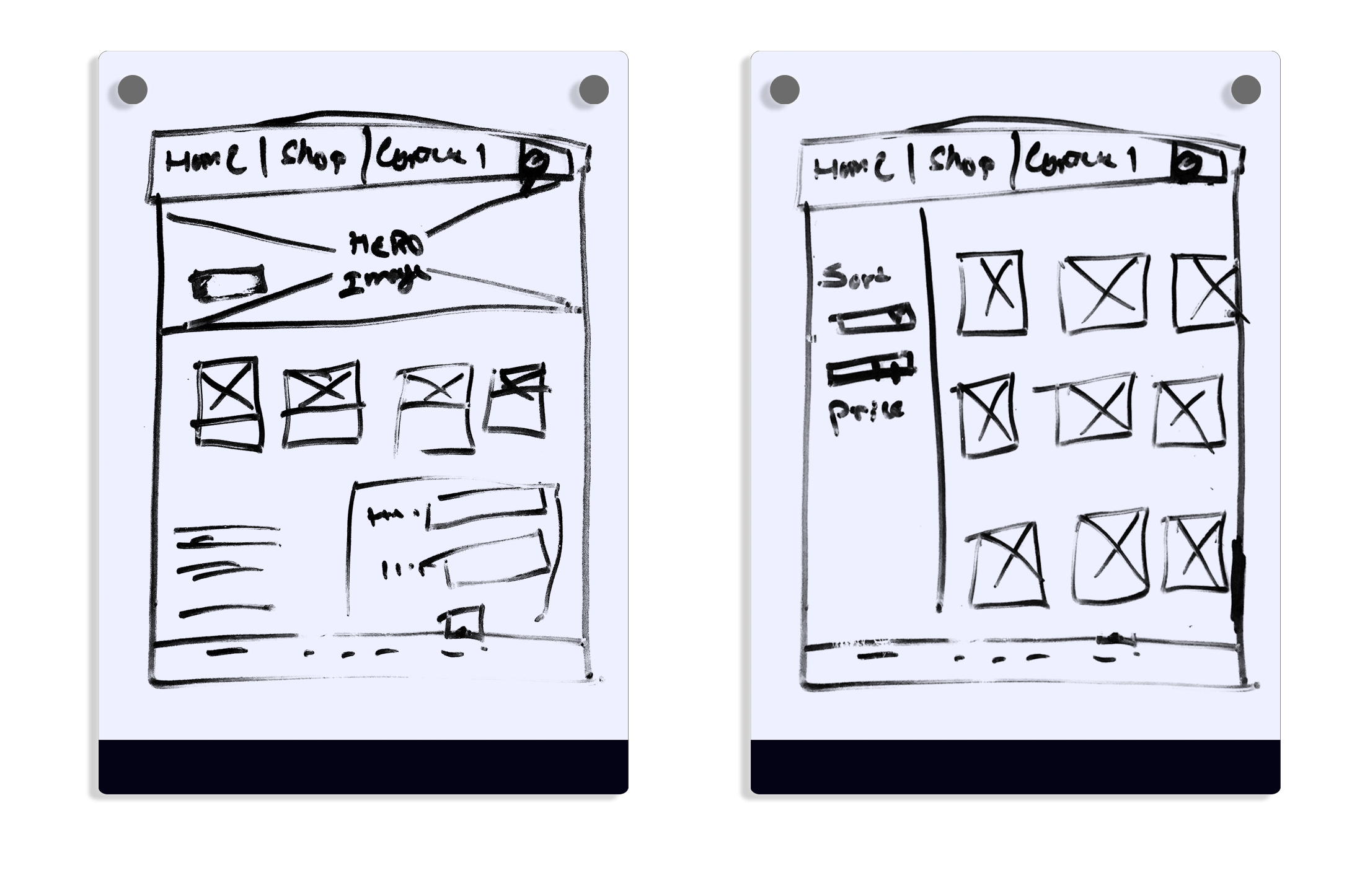
Initial concept of Home and Shop page
The lo-fi wireframes were enhanced into Mid-Fi prototypes to get an approval from the board, which was to be further designed into a Hi-Fidelity prototype. We started working on our first version of our frisp_high fidelity prototype. The picture below is our first version of the prototype.
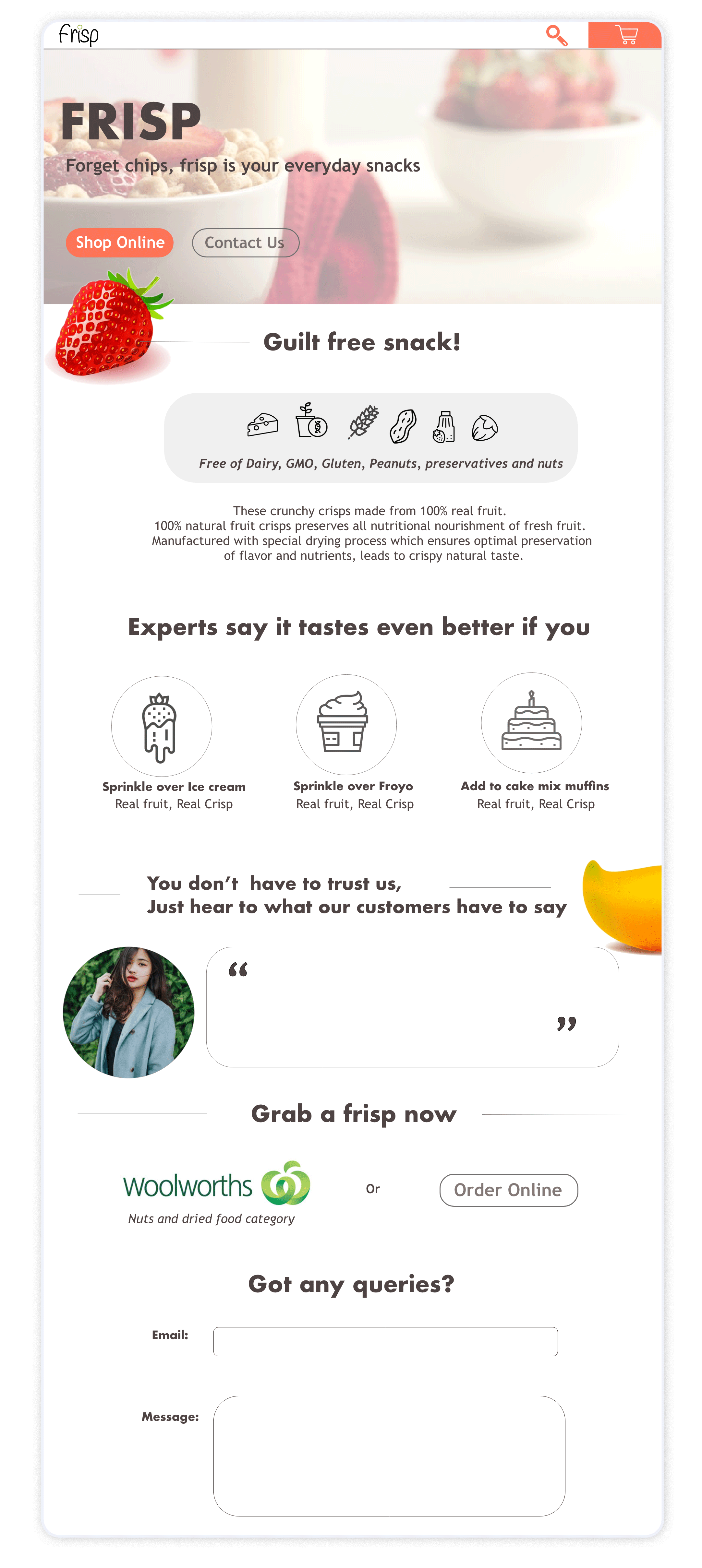
Initial concept of Home page
Now that we have at least one page and some form of design consistency going on, we needed a structure for the website for rapid prototyping, so we came up with a design system to aid us on design. We made sure that we created nested components/symbols so that it was highly customisable
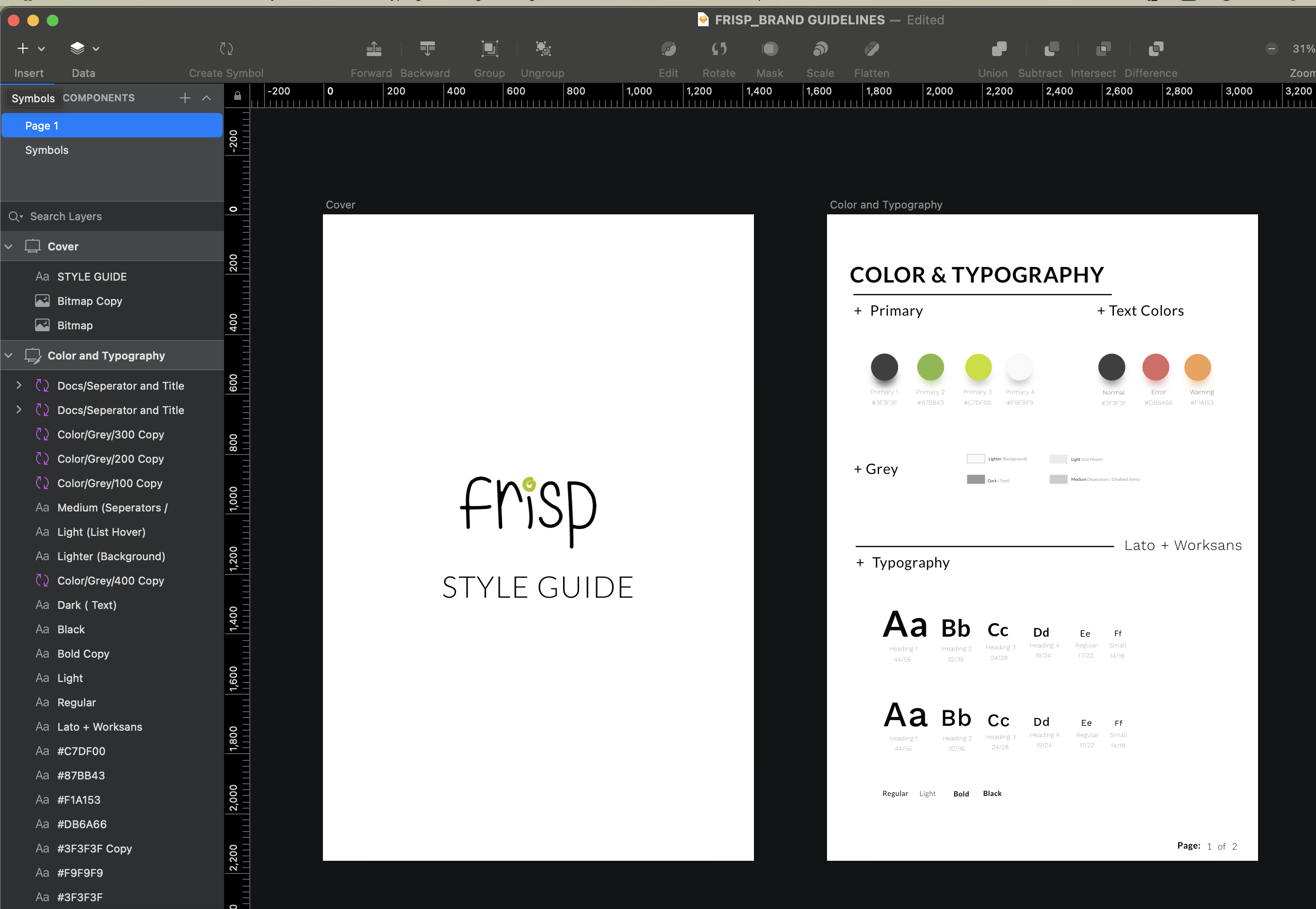
Design System Using Sketch
We had first iteration done and dusted, we incorporated everything included In the design using the frisp website and decided to run the usability test it with our first set of users that were recruited. We gave participants to complete scenario based tasks that would test the usability of the main function of the website. This phase was really essential and it allowed us to make important decision on our final design.
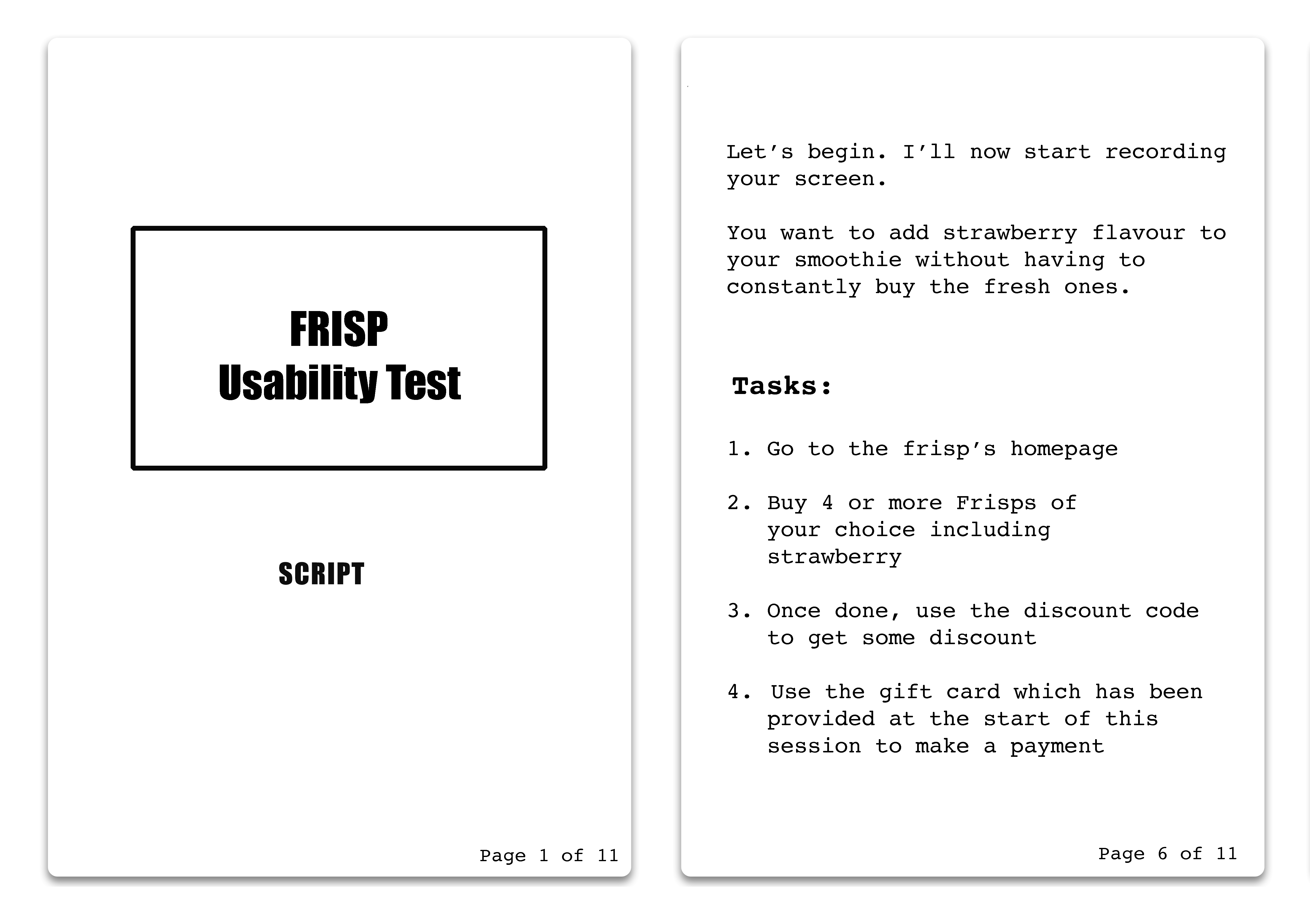
SCRIPT for usability test session
We took notes of the areas/ tasks where users were struggling and seem confused, unsure of what they were doing. The short interview session at the end of the session helped us more on figuring out what needed to be changed.
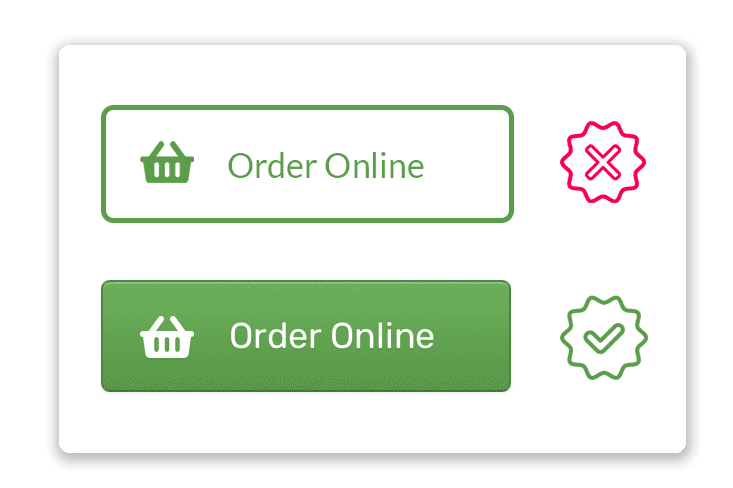
Despite having buy now button everywhere, users were often found scrolling to the top of the page in order to use the menu. Hence, we decided to change the fixed header to sticky.
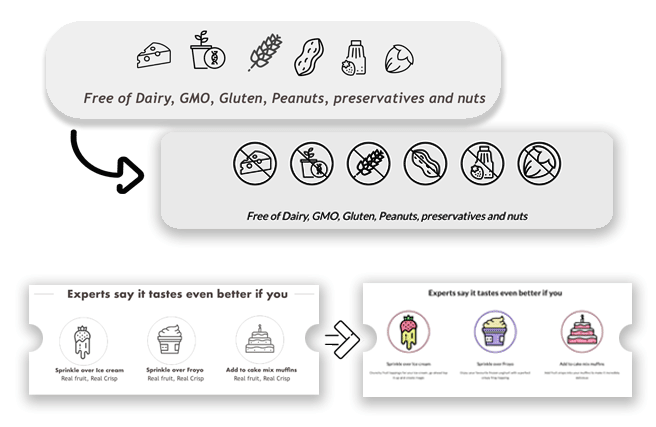
Users were found disregarding the button right in front of their eyes and were often using banner to access the shopping page. Upon further discussion we came to a realization, that they didn't registered the existing button as "a button" because it didn't looked clickable.
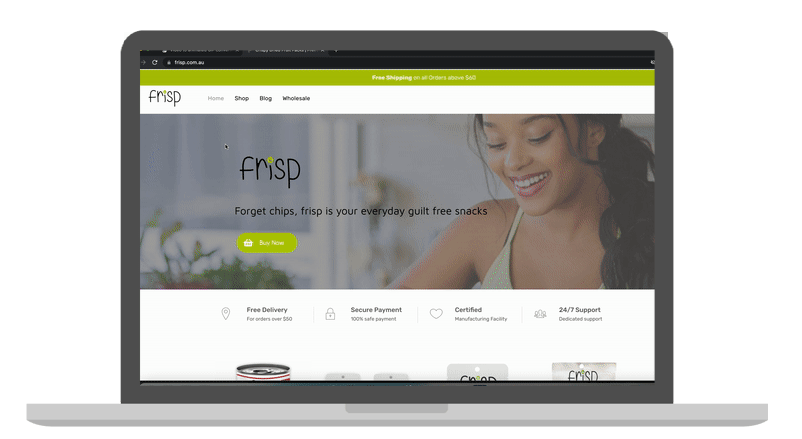
It looks like the infographics is saying it contains nuts, dairy and everything else, shouldn't they be striked out? - TJ
How would it look if the design icons, which are plain black & white were colourful - Nick
After several iteration and design validation later, we decided to replace the existing frisp website with a new one. The implementation was done using WordPress . The decision to use WordPress was made because, the existing Frisp's website was built using WordPress and it was the platform familiar to everyone working at Frisp. There were few hiccups during the launch, but everything was fixed and the Frisp website is now up and running.
The current frisp implementation can be viewed at: frisp.com.au
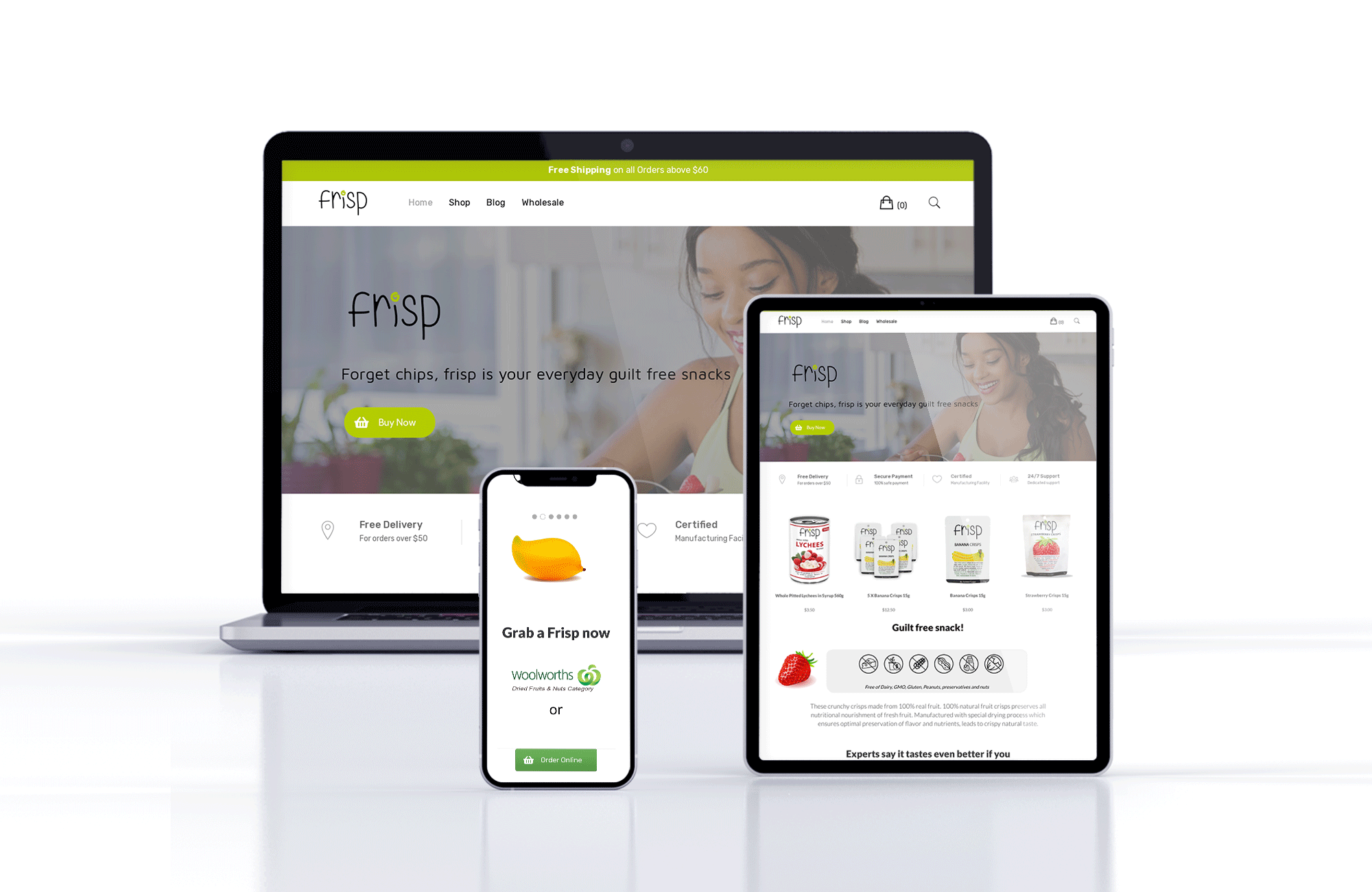
Final Design of frisp
According to the frisp team, the rebranding has yielded a very positive result and increased sales of frisp. They have decided to add more Frisp products to their existing product space and they are positive that it'll be a success.
It has been reported that the customer bounce rate has decreased drastically. We are yet to find the exact numbers on these reports. Overall, Frisp seems to be doing great with rebranding project.
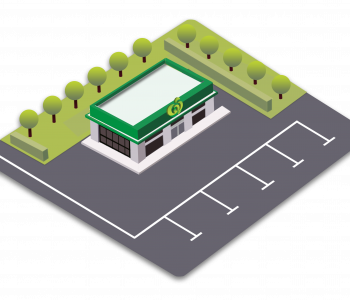
April 2016
4 Months
3
User Researcher
Woolworths is an Australian supermarket/grocery store chain that specialises in selling groceries, health & beauty products, household products, pet and baby supplies, and stationery items. Known for being a leading innovator in retail in Australia, they were investing over $1 million research at the Queensland University of Technology (QUT) for innovation in retail .
This was my first design challenge and I undertook this project with no shopping experience at Woolworths since it was my 5th week in Australia.
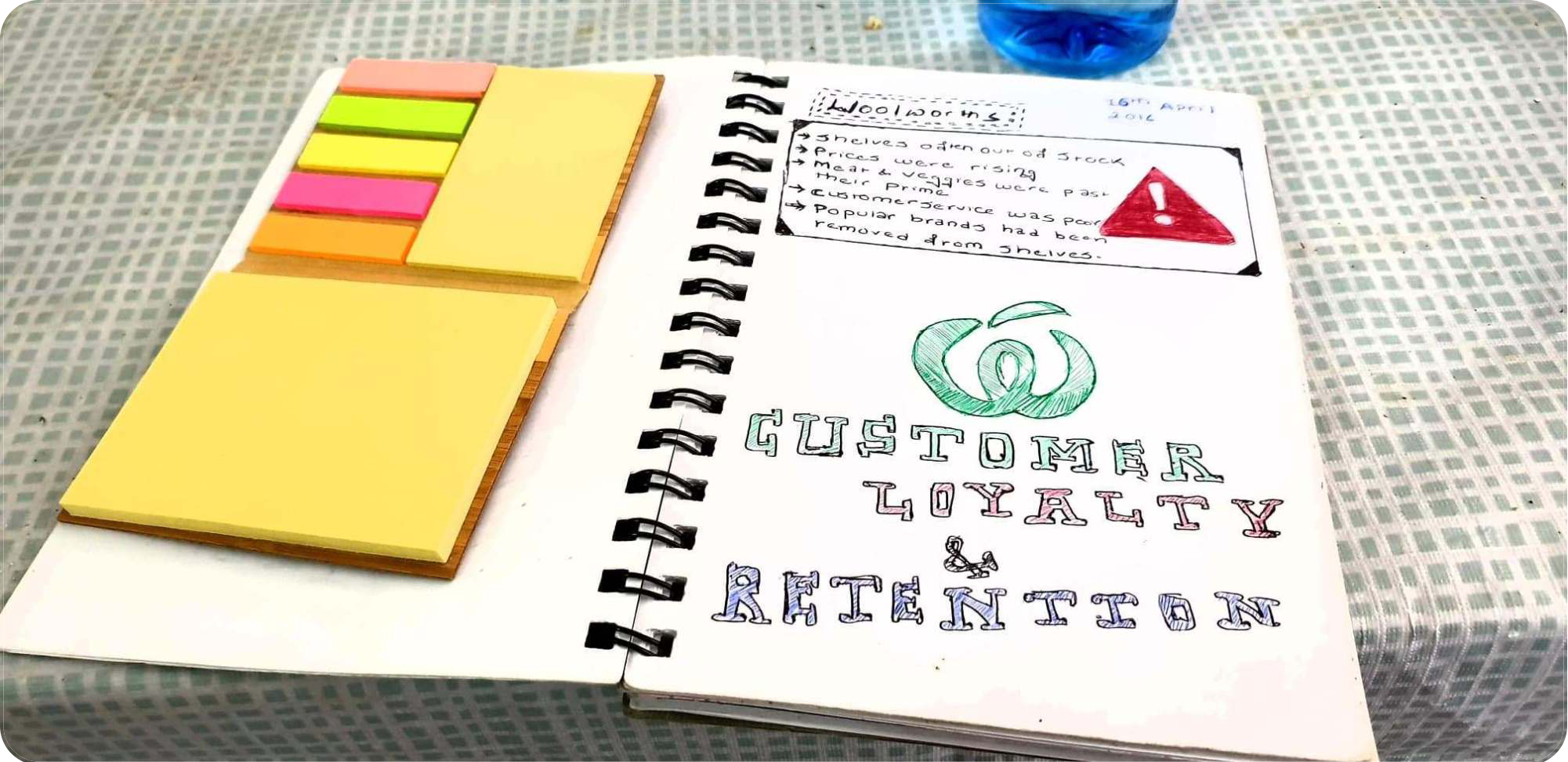 Initial Problem from Woolworths
Initial Problem from Woolworths
Our main goal was to Strengthen Woolworths' Brand Name by filling the gaps in customer needs and expectation to create customer retention & customer attraction.
I worked as a lead user researcher throughout the design challenge. I was accompanied by a business analyst and a ux designer. I produced all the deliverables included in this case-study and presented it to the stakeholders.
We agreed on not having more than one user group to prevent ourselves from the risk of losing focus. When designed for every user group, any ideas or suggested features would fit for at least one user group making project out of control.
Our focus on the Australian working population has nothing against other age-group or diversity. We just needed one community group to focus on, since different factor affects the way people think and act. Ours happens to be just this user group. We also had a group of other stakeholders which I haven't included in this case study since they were out of my scope.
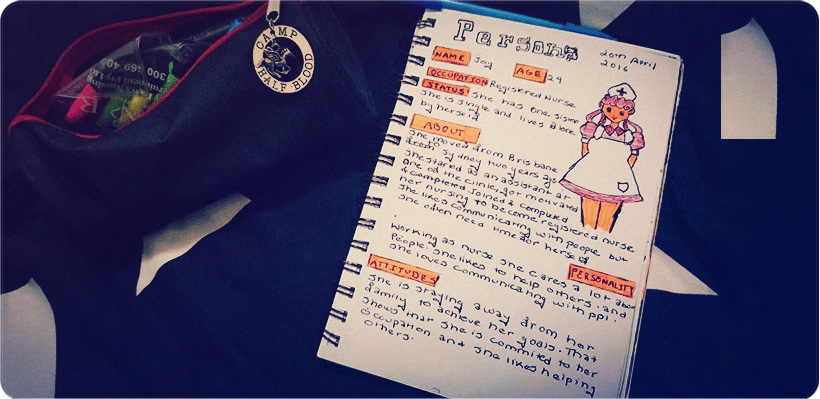
Persona Representing the User Group
Woolworths team gave us the details of their customer feedback from their research on what was wrong or what could be the problem
▸ Shelves were often out of stock
▸ prices were rising
▸ meat and vegetables were past their prime
▸ customer service was poor
▸ and popular brands had been removed from the shelves
Despite the given facts, they wanted us to conduct our own user research. Woolworths marketing team conducted some insight research beforehand, but the problem seemed too general and It looked as if it was out of context and we had no idea when, where, or how they conducted the research, what was the user demographics or what is and what is not data?

Keeping the problem provided by Woolworths in mind, our design team visited 30 supermarkets including Woolworths, Coles, Aldi, and IGA (around 15-20 mins observing customer behaviours, checkout counters and shelves) for a week between 5-7 PM as well as Early morning (Ideal time for shopping: before and after Work). We then observed the behaviour of shoppers and added it to our notes.
Note: It was just a plain observation, nothing detailed
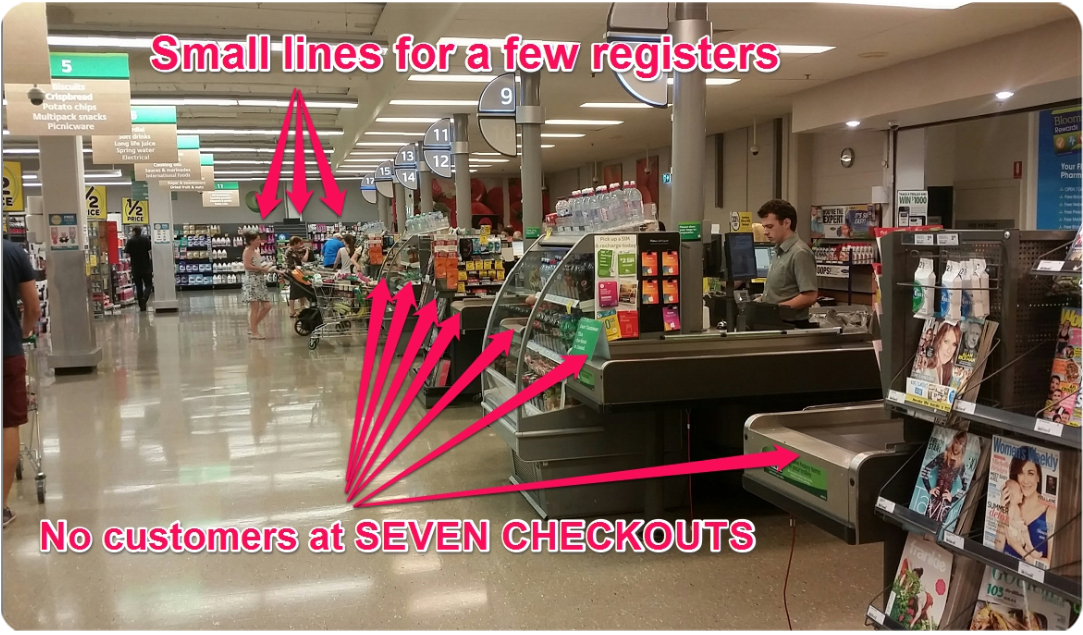
Woolies checkout counter
What was obvious during these observations was that out of seven checkout counters at most of the Woolworths, at least five of them would have little to no customers for more than two hours. However, the case was completely different to their competitors as we found their service checkout counter full of customers.
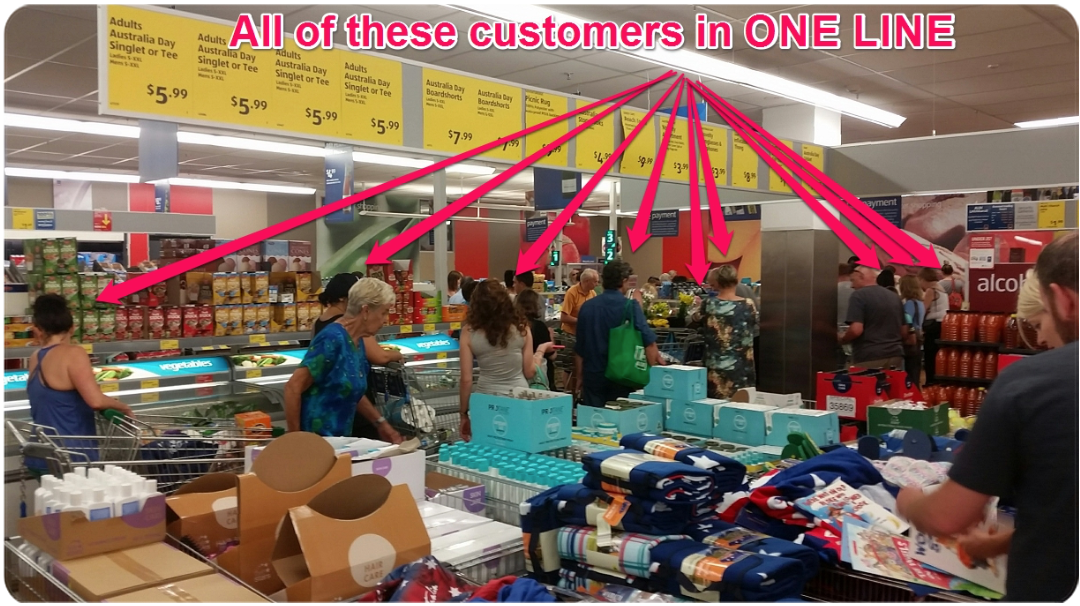
Customers at checkout: other competitors
Main Takeaway from this observation:
As reported by the Woolworths team, the fact validated that Woolworths was indeed loosing its customers to other competitors or wasn't able to make their store appealing . However what was interesting is the reasons provided by the marketing research team for lack of customers wasn't adding up i.e. shelves were found restocked and we weren’t able to find any expired product during our observation. We hypothesized that there were way too many competitors right next to Woolies stores, which might have divided the users who used to be loyal.

We also came up with 5 persona's based on this observation which were referred throughout the whole strategy-design process to recruit/validate our ideas.
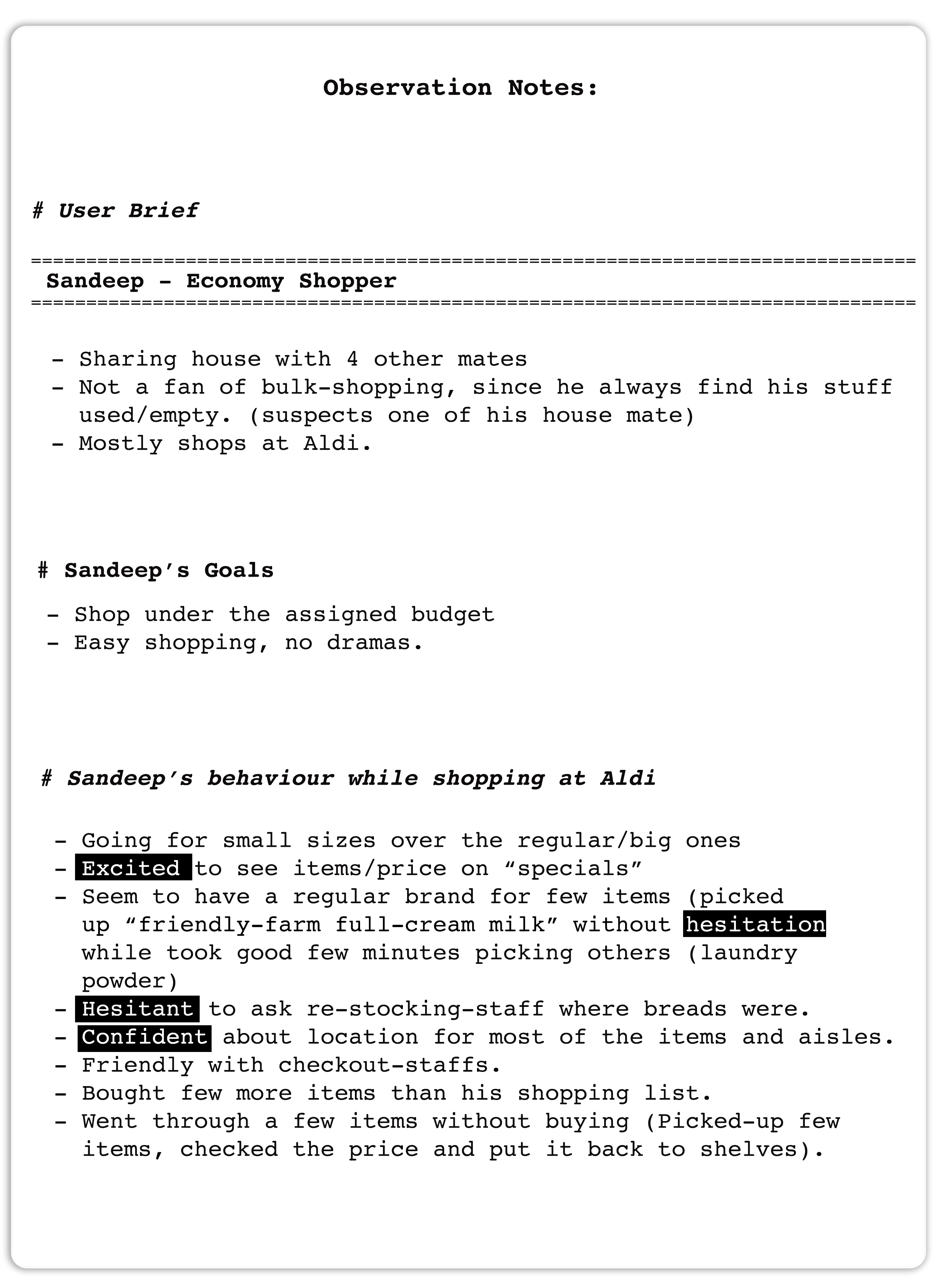
Observation notes, taken while shadowing shopper
With our written consent signed, We shadowed our shoppers, the observation notes above is the documented form of what we observed during the shopping experience.
We also used an empathy map to understand our user needs and to develop a deeper understanding for who we are building solution for. The images below shows persona and Empathy map for two of our users.
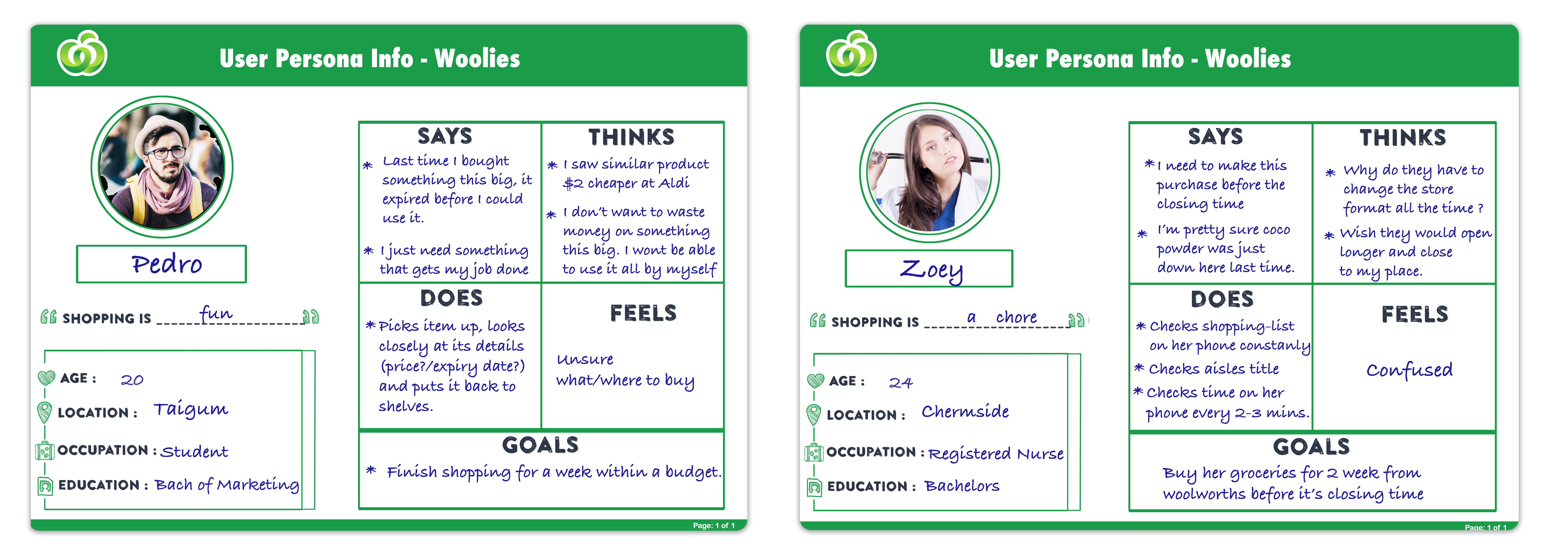
User Persona and Empathy from regular shoppers
Since our, research process was contextual interview, it was not timed or scripted, but we did came up with a few interview questions as a guidelines. While coming up with these questions, we mainly took three of these points in consideration:
• Motivations: What is the user trying to get done?
• Activities: How does the user do it at the moment
• Problems: What are the pain points / happy moments with the current process?
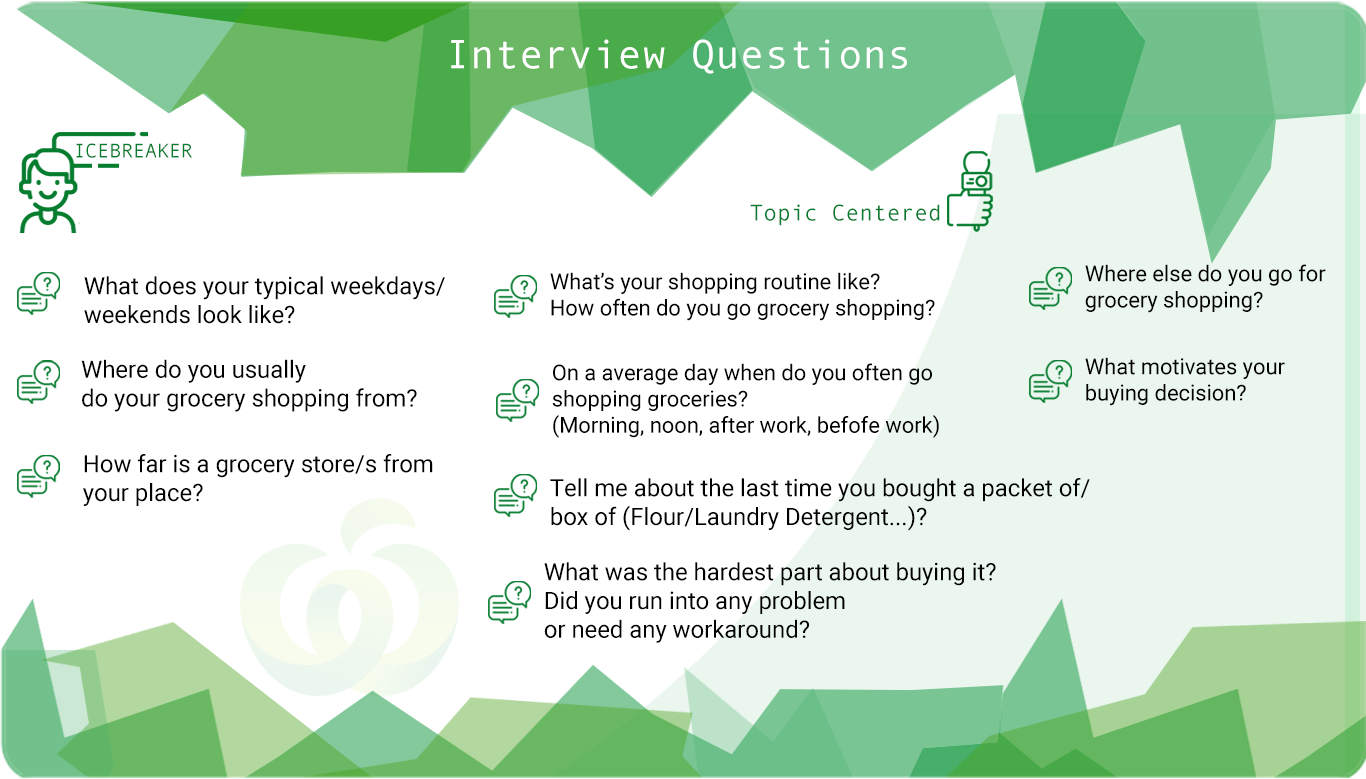
Rough guidelines for questions
We planned and created journey map for all shoppers-personas but we wont be able to include everything on this project. During this process we figured out: for some customers, the journey started right-off with Woolworths while for the others it started only when they couldn't find their desired item at other stores (competitors)
For instance for Paige even though her ideal shopping destination was on Coles. she wasn't able to complete her journey based on her expectation, and that was when she decided to give Woolworths a go. During this shopping experience with the competitor we tried to gain her insights on what excites her, what made her decide Coles was better than Woolworths, what would make her journey successful and what were the pain points we could improve.
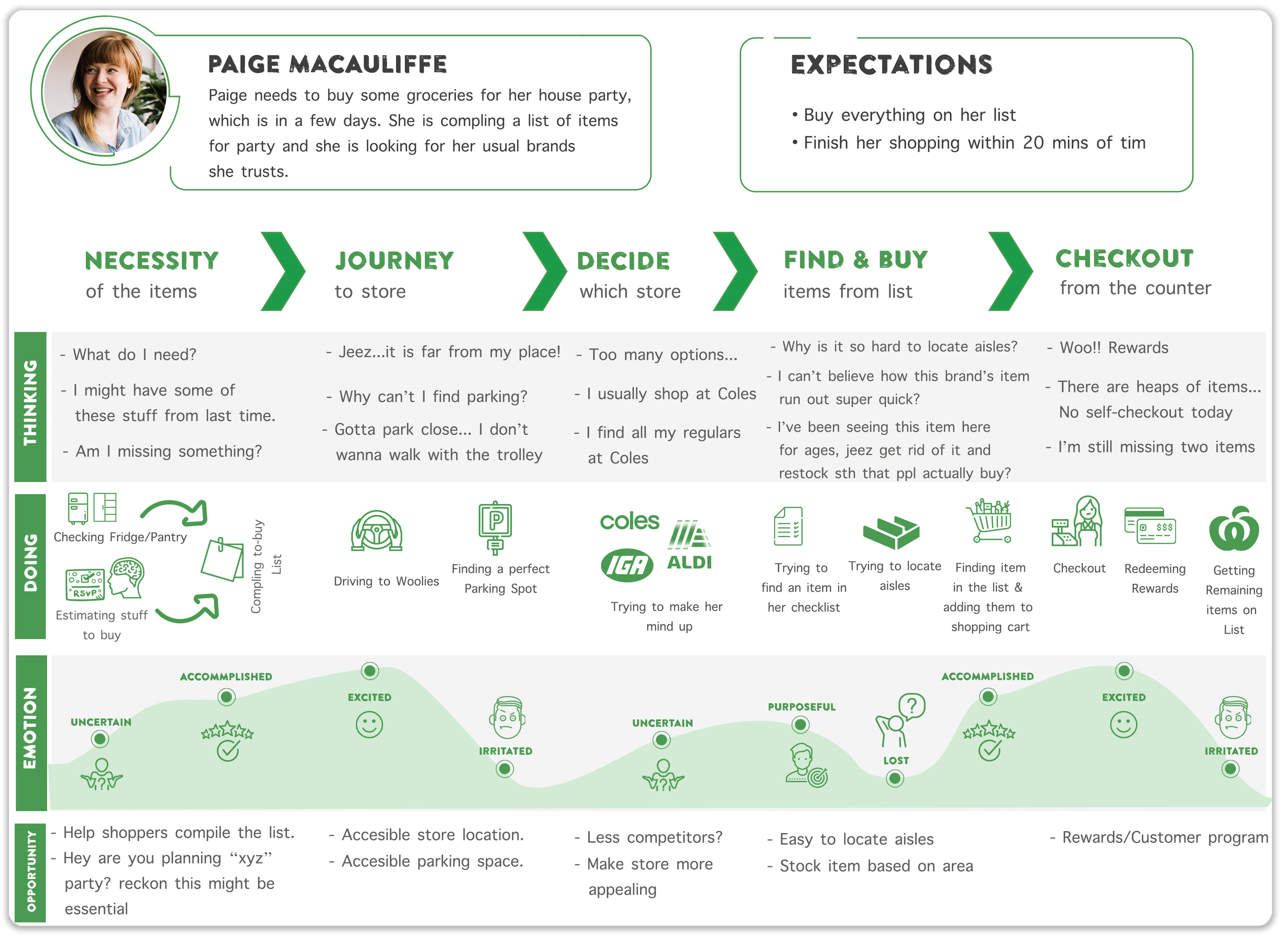
Journey-Map for user (Paige) with respect to their shopping experience
We had initial problem handed-in to us and the problems the we hypothesized at the begining after the general observation. Now that we collected enough data on shoppers habit, observation, their behaviour, their journey plan, and some insights from their interviews, it was time to narrow down what needed to be done in order to increase retention and what hinderances they were facing. For this we used Affinity wall and categorised users problems based on their nature.
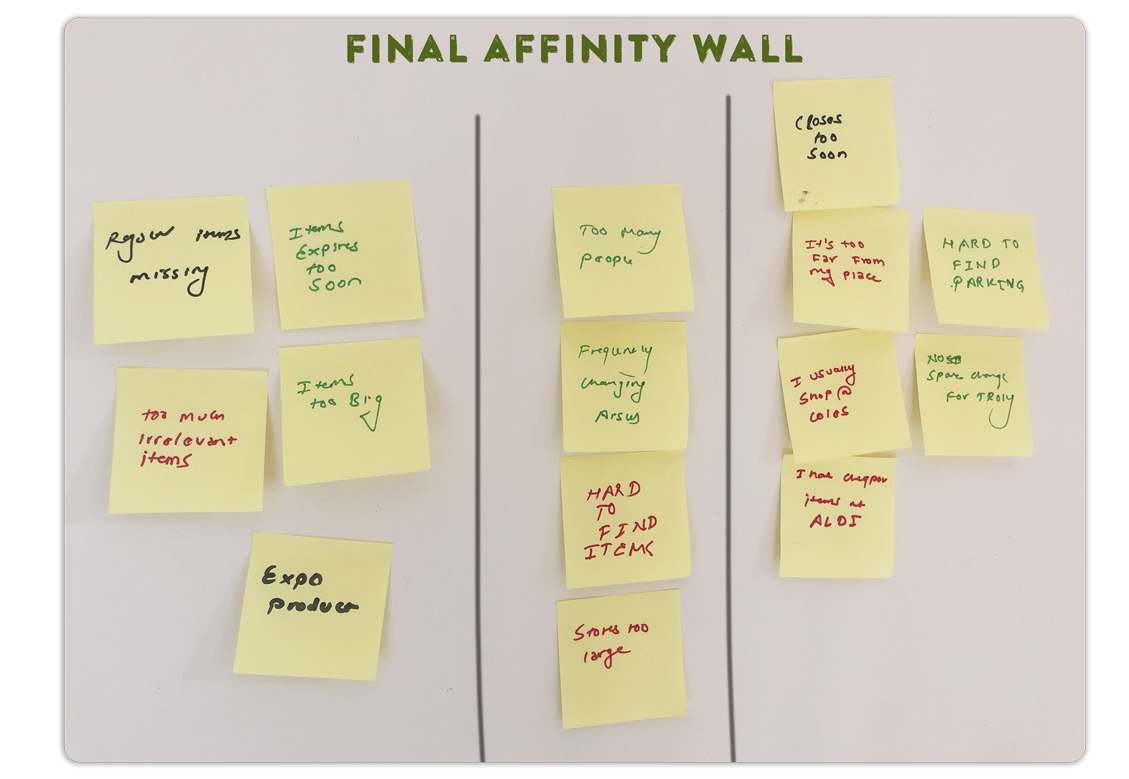
Summarised Affinity wall that represents all the problems
We classified problems of similar nature gathered from the affinity wall based on users journey/interviews and populated the table below. We thought this would help us deal with them individually and in a way that we could diagnose them on the basis of the structure (which part of Woolworths, does it concern to? management, stakeholders, store-front or customers habit) to help us design the strategy.
| Pain Points | Relating to |
|---|---|
| Product | • Expensive products • Missing regular items • Items too big • Expires before the usage date • Heaps of Irrelevant items. |
| Store location & Layout | • Crowded Stores • Frequently Changing Aisles • Hard to find specific items • Stores way-too large to find any items. |
| Competitors | • Closes way too soon • Not convenient (location wise) • Hard to find Parking-Spot • Competitors (right next to each-others) • Price difference (with competitors) |
We thought the best way to tackle the problem, would be by finding out "why is it a problem" in the first place. For this exact case we used 5-why's interrogative technique from Toyota or in our case (n)whys interrogative technique i.e. until we couldn't go any further we were asking our users/stakeholders why they were having a problem? Doing this allowed us to pin-point, which part of the customer journey does the problem relate to? and which part of the service is it lacking at and where does this problem, come to play in a service design process.
Based on our conversation with Pedro, his problem (Woolworths not being his ideal shopping centre) and implementing the n(whys) technique, we could clearly see that the problem wasn't on the customer side or the store instead it was a problem relating to size of product which needed to be fixed from suppliers side. This method was perfect for us to direct the problem based on the nature

5why interrogative technique
To prevent the unnecessary cluttering of this case study and to reduce the reading time, we haven't included every bit of questioning section in this part. The problem statements below is how we re-framed the initial problem statement to question.
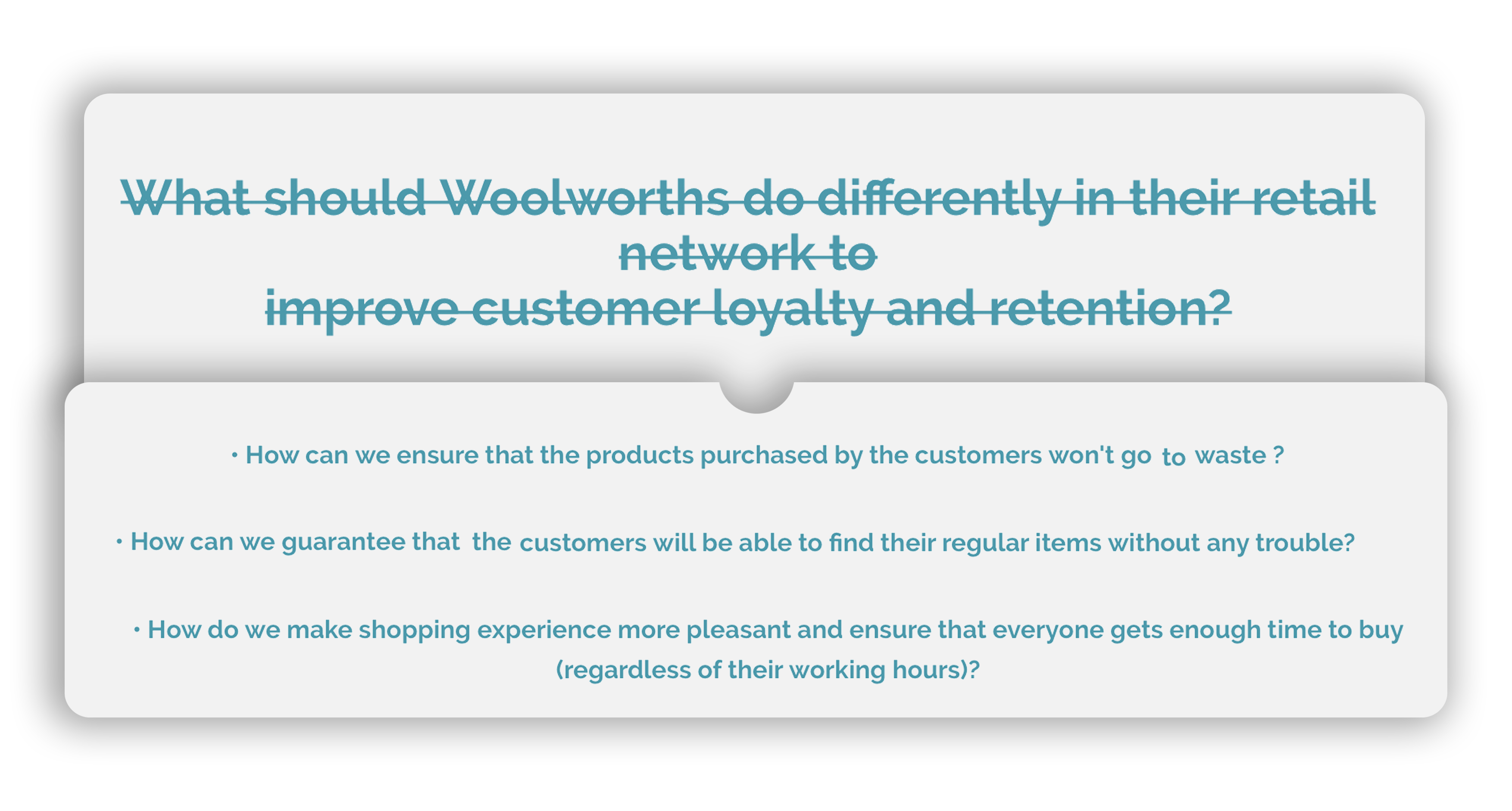 Reframed Problem Statements
Reframed Problem Statements
After brainstorming for solutions and filtering out actual ones that would solve the problem, we came up with the solution that could potentially work:
Having a place that would store byte-size goods and only the goods that are in high-demand in that region would potentially solve the problem. Making the store open till late would also solve most of the shoppers problem. I decided to take these solution one step ahead and thought all of these mini solutions could be further accommodated using one solution: a convenience store.
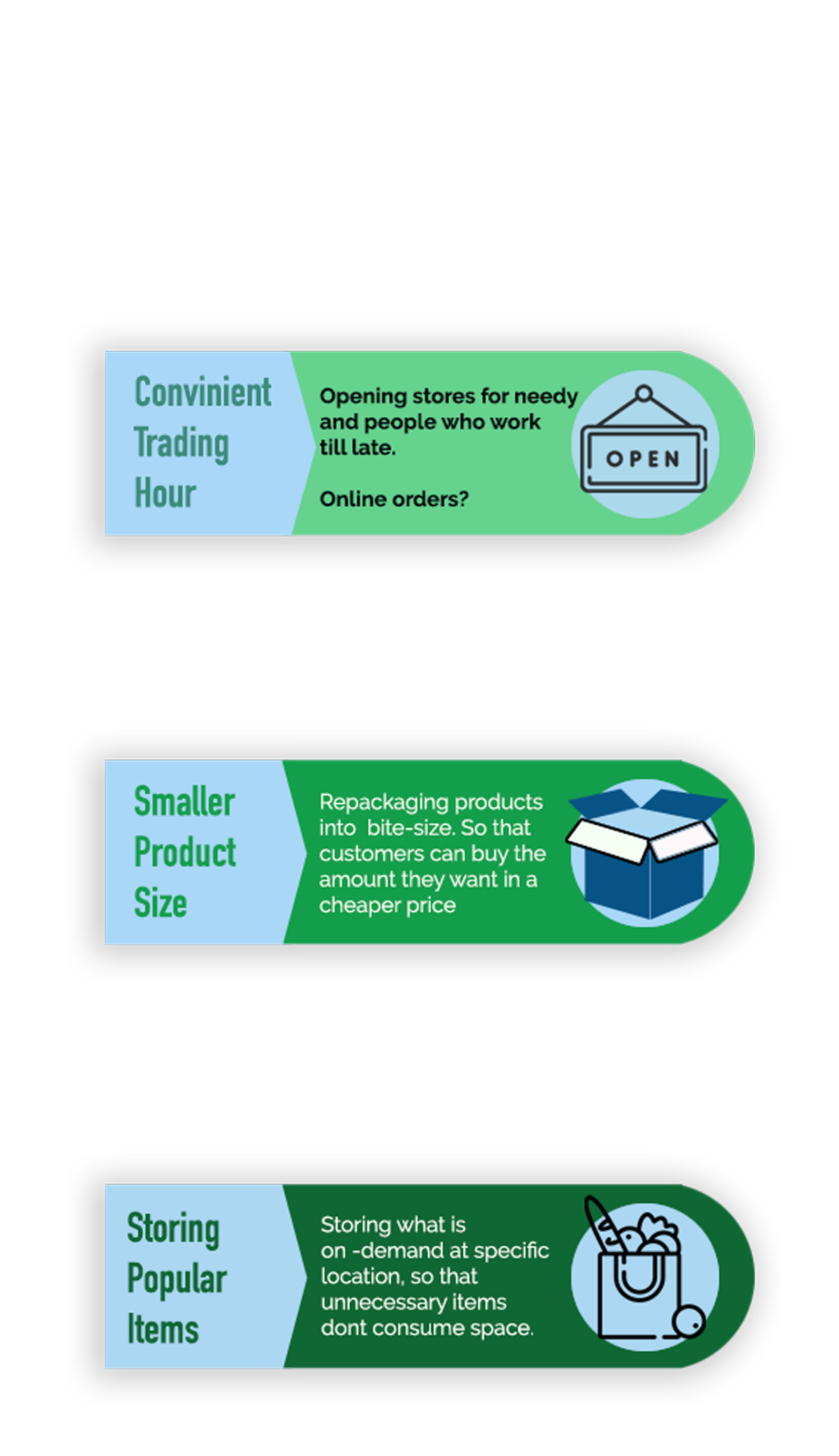
Solutions to overcome problem
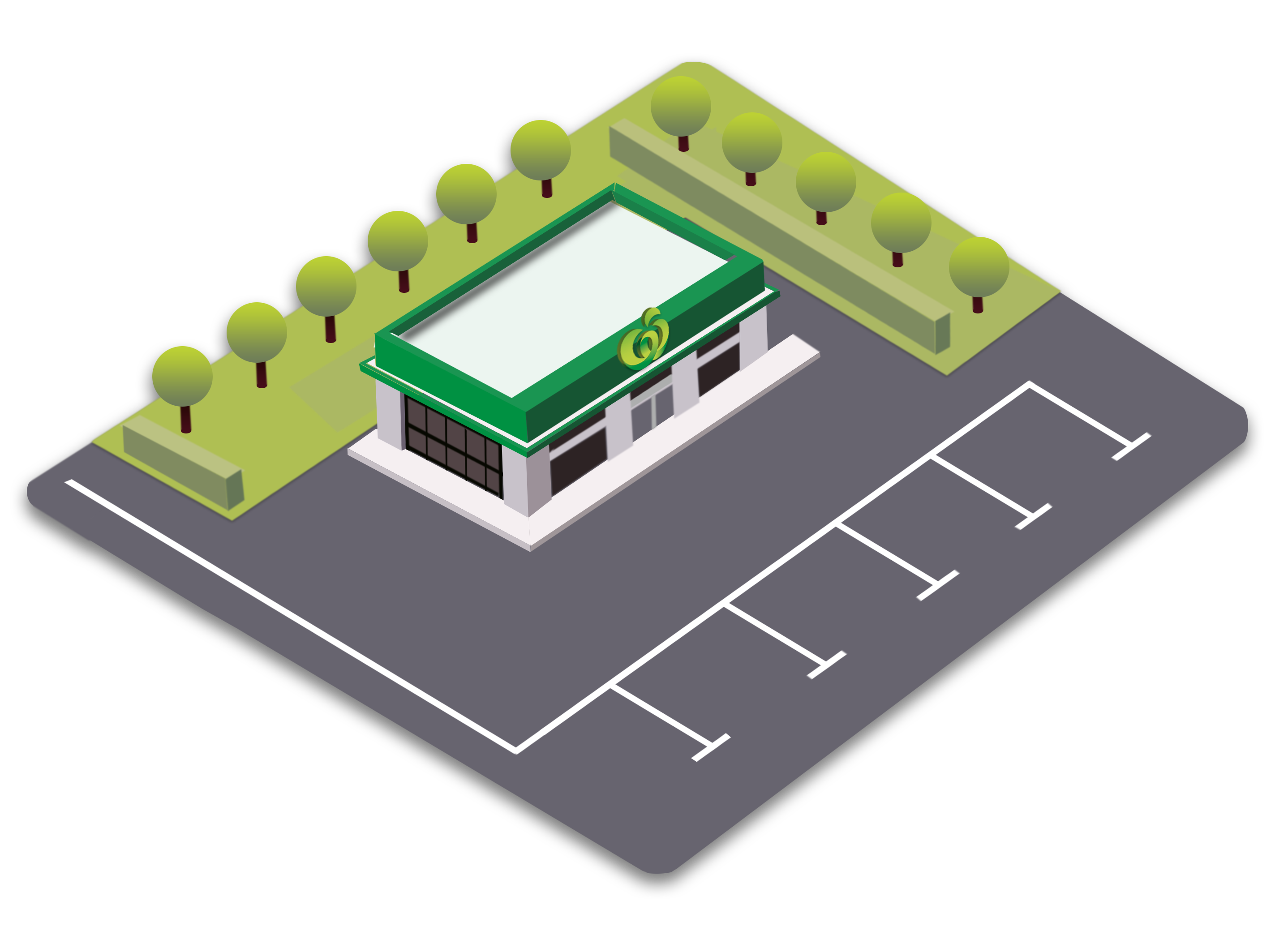 Prototype - Woolworths convenience stores (solution)
Prototype - Woolworths convenience stores (solution)
With our first set of prototype and with the help of few other role-play artists we executed role-play in front of stakeholders, decision-makers and different level of UX researchers. This role-play exercise included costumes, name tags, 3d model and props to provide the ingenuity.
Since the script alone would consume half of the portfolio page, we decided to include only first couple of pages of role-play script here. The rest of the script for the role-play can be requested using the form at the end of this case-study.
At the end of the role-play exercises, few of the senior researchers came up with recalibration possibilities for the strategy suggested, which were also considered and taken into an account.
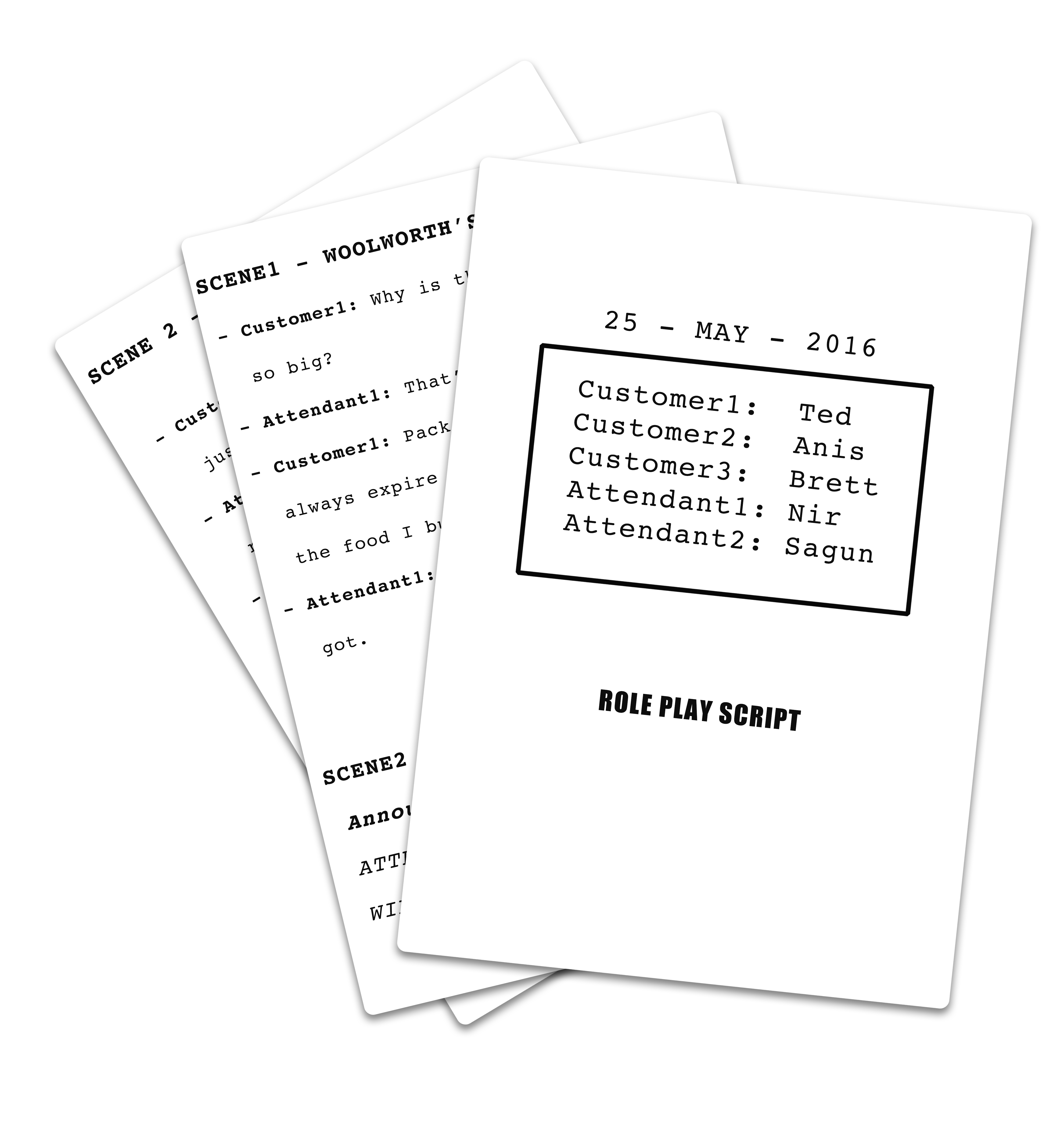
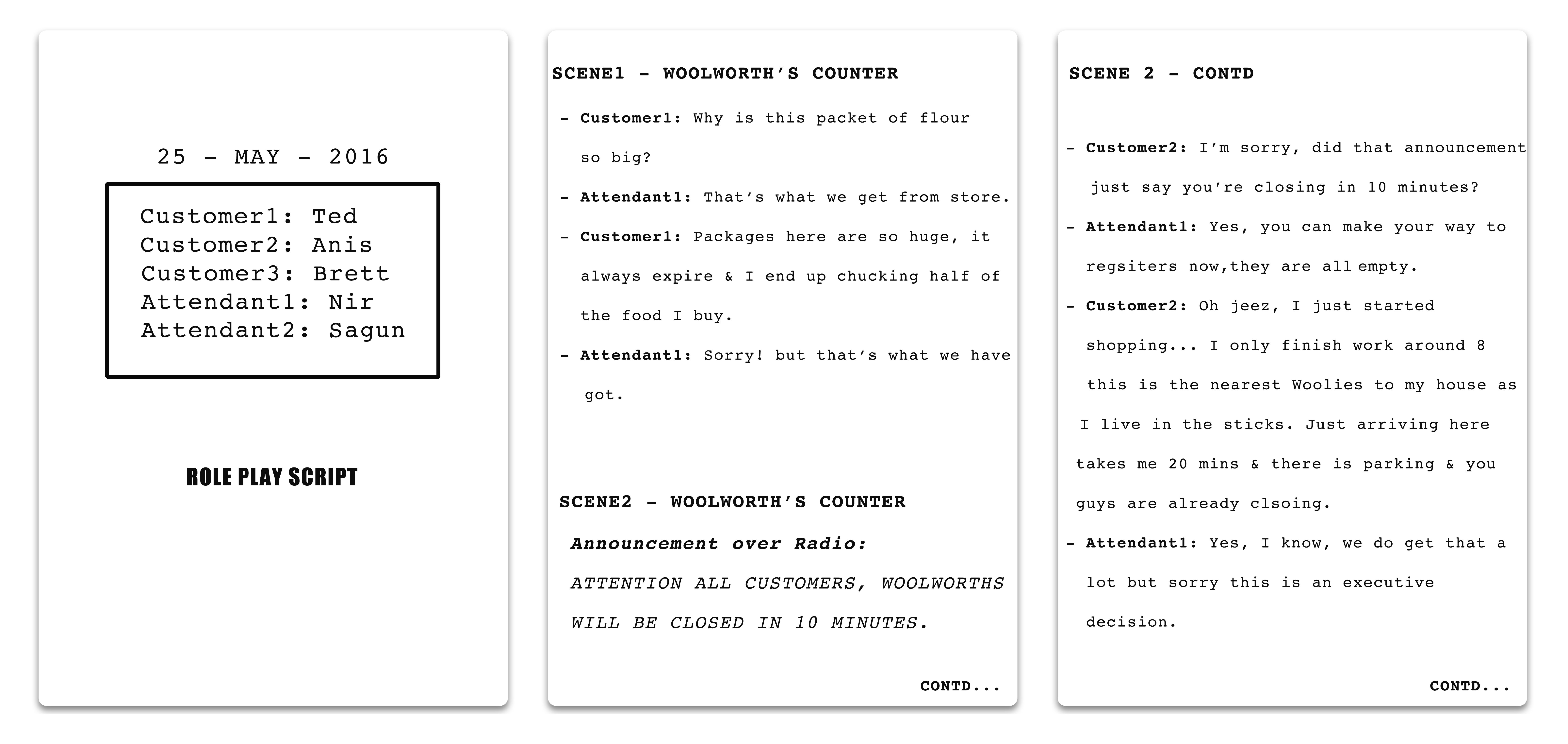
Role-play script
All of the research data, solutions and prototypes were handed-in to the Woolworths group. Since this project was extremely big and had to be implemented from the higher-level and it required approval from all the board members , we couldn't get the initial feedback. Our suggestion to Woolworths group was to test the idea on one store for a couple of months and see if it would be successful.
Update: Although we can't be too sure about it (since Woolworth is not vocal about how they came up with the idea), Woolworths decided to rollout Metro by the end of 2016, which practically follows same concept and idea and so far has been proven to be successful.
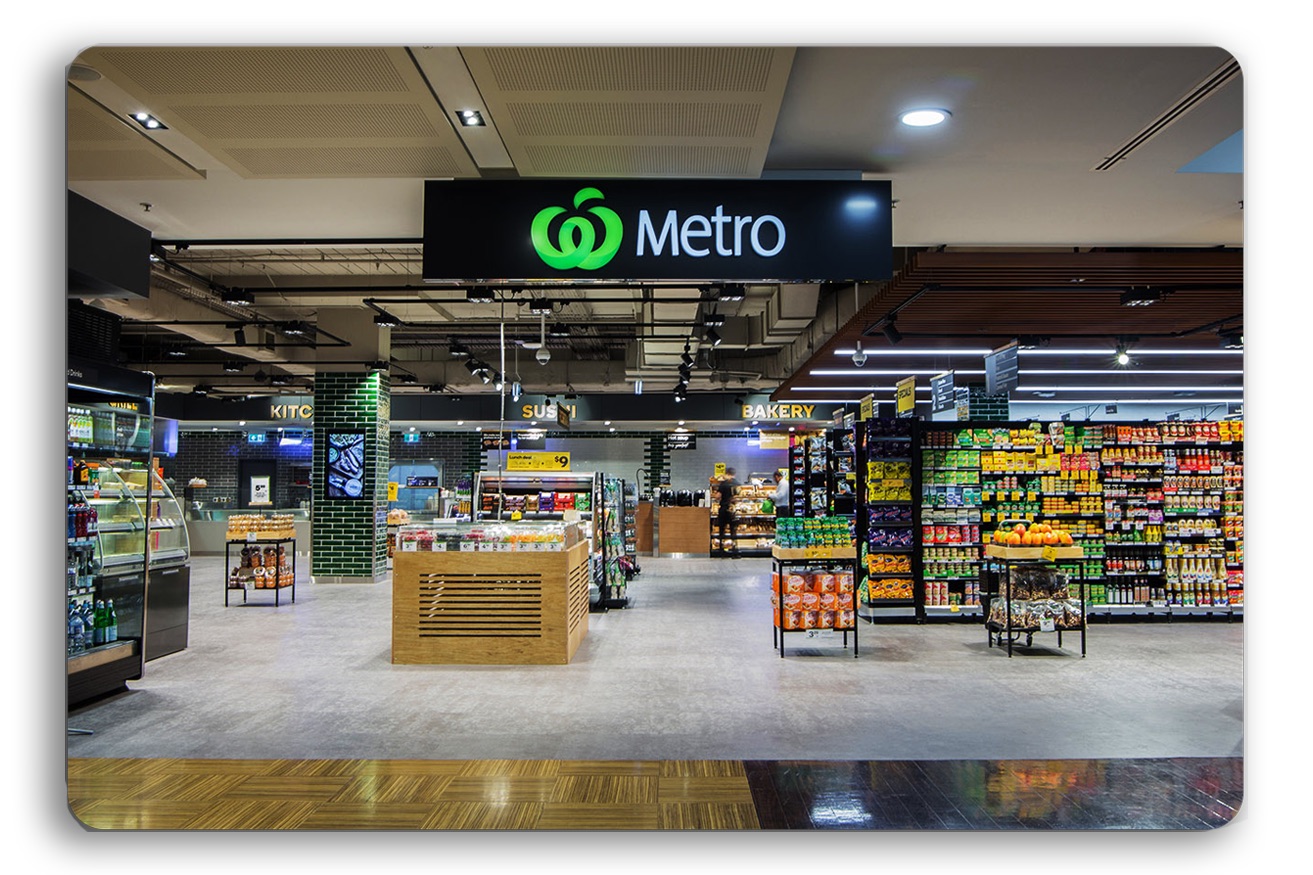
After the introduction of convenience store format Woolworths group has increased retention by 17% of that to the previous year (just within metro) and they decided to open six new Metro stores according to their Annual report for the year 2017
You must be logged in to post a comment.